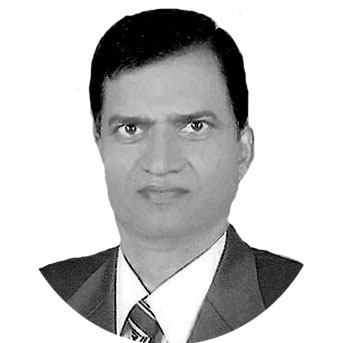Dr Rajkumar Singh
Every social structure has differentially located units which have potentially conflicting and integrative interests and values. The interests are generally reflected in their socio-economic-political exchanges; and values are reflected in their ideologies and goals. If the socio-economic-political exchanges are mutually rewarding and values, ideologies or goals are commonly shared, then they work as integrative bonds between these units; otherwise they do not. That is, if some of these structural units try to enhance their interests at the expense of the others, and if they emphasise their values, ideologies and goals while ignoring those of the others, they may weaken the structural cohesiveness and induce conflicts, often violent. Thus, social processes are mechanisms which maintain or change the existing social structure and its internal bonds.
The old social system of India was structured around a hierarchy of varnas which were superimposed on a loose and primitive system of castes that existed before the Aryans came. In course of time it assumed importance in the secondary functions of society including the political one which were confined to the resolution and adjudication of disputes. The advent of Aryans opened a wider perspective for more organised, rigid social base. The Aryans divided the society on caste-basis as Brahmin, Kshatriya, Vaisya and Sudra which were assigned to perform the functions relating to knowledge, defence, wealth and labour. It was a group-dominated system and an individual was only considered as a member of a group. The political activity in the then social order was worth in name as village community, caste and joint family remained the basic units of society. It was an organisation of society being non-competitive and non-acquisitive. The aim was social security, stability and continuance of the group, that is of society. If there was any politics, it was the politics of village dominance of local cleavages, factions and of managing external authority and its unpredictable ups and downs by allowing it a role in the local dominance. On the whole it was a community life shared together but lacked a unified political framework.
The coming of Arabs as well as Afghans and Mongols who entered India as raiders and conquerors in the eighth century in Sindh and then more massively in the tenth and eleventh centuries were the first to be absorbed in old social system in rural and urban areas as well. Within its wide fold there was monogamy, polygamy and celibacy; they were all tolerated just as other customs, beliefs and practices were tolerated. Between two groups, they acknowledged, could be any amount of variation of race, religion, colour, culture and intellectual development.
Among the outsiders, the society or social structure of India considered the Mughals in a different way. Though the Mughal dynasty was consolidated by Akbar, the third emperor, it made great strides in civil administration and despite a long period of fighting and dislocation of socio-economic life, the dynasty succeeded in establishing a rule of hard core military character. The Muslims, for the first time confronted with Hindus with a different religion and social system. The coming of Islam and of a considerable number of people from outside, with different ways of living and thought, affected existing beliefs and structure. The traditional Indian concept of tolerance and social assimilation was put in abeyance. Muslims began to establish their centres of culture in urban areas in which Hindus also took part but the two communities, from the viewpoint of religion and social systems remained separate and mutually exclusive. It widened the feeling of distance and estrangement between the two communities.
The distancing of the two communities–Hindus and the Muslims — had far-reaching effects on the later politics of India. It was like a sowing of seeds that planted and flourished in following decades and centuries. The coexistence of Hindus and Muslims in India had gone through several stages but the Britishers who took over after the Mughals exploited the situation in their favour and ruled the country for hundreds of years with the help of the policy– ‘divide and rule’.
The last and final part of the drama was unfolded when the British established their dominance over the large part of the country and defeated the Portuguese, the Dutch and the French who all continued their explorations in the fifteenth, sixteenth and the seventeenth centuries. The British East India Company, on behalf of the Britishers, made important gain by eliminating the French and then by subduing the already weak and tired Mughals by procuring trade privileges along with territorial and financial rights. When it was realised that the British were playing nobody’s game but their own, and were out for the political domination of India, they had already established firmly on the saddle. The establishment of British rule in India marked a significant difference in rural life and administration. The development of political dominance and administrative hierarchy, made before the advent of the British had no great impact on local institutions and village affairs, and still less on habits, beliefs and traditions of the masses of people that lived in the villages. For the most part, the old forms of social and occupational organisations continued.
— The writer is Professor and Head, P G Department of Political Science, Bihar, India.










